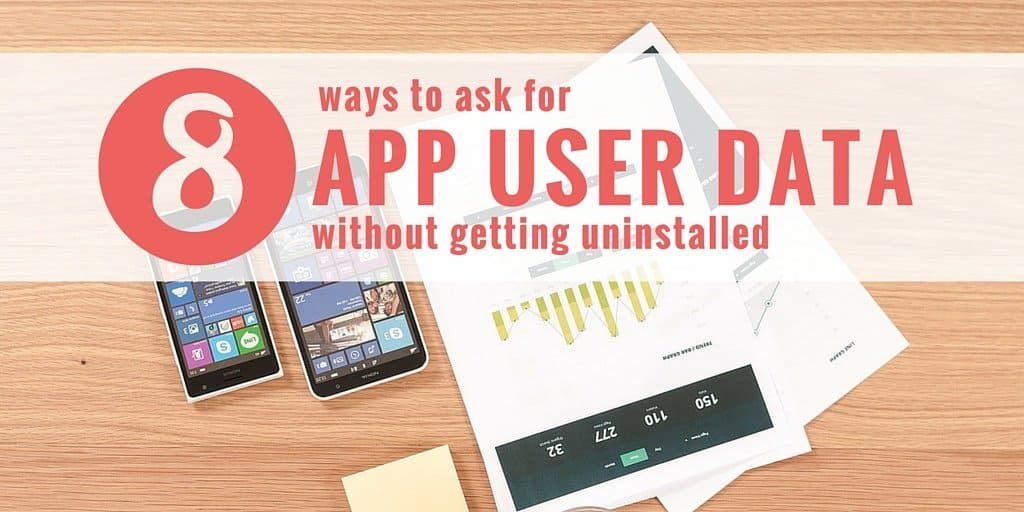
As marketers, we know that the more data we can get from users, the the better we serve them. However, users aren’t always too keen on dishing out their data. In fact, Studies reveal that 60% of users say they have chosen not to install an app in the past after discovering how much personal information the app requested.
So how do you ensure that users say yes to your requests for personal info? For starters, you need to be very clear about what users will get in exchange for their data.
Users get frightened off when they don’t understand why an app wants data from them. Ease these concerns by emphasizing how providing data benefits the user. What is your value proposition? Why should users give additional information to you and what do they get in return?
In addition to addressing the why, how you ask is also critical to the buy-in process. Do you ask for all of it right up front or do you gradually ask for more over time as the user becomes more acclimated with your app? The best way to earn that extra user information will depend on your app. However, below are some best practices on asking your users for more information.
1. As Part of the Onboarding Process
Onboarding is the first interaction your new users have with your app, giving them a high-level tour of the app’s ins and outs.
The focus of an app onboarding process is to highlight your app’s value and show new users how to get the most out of it. Because of this, onboarding is the perfect opportunity to ask users a bit more about themselves before they dig into your app. For the best response, emphasize how your data collection will enhance the app experience for the user.
The Medium app asks users to select topics that appeal to them in order to help generate their story stream. Note that this isn’t an optional step – users must select at least three topics to continue with the onboarding process. For Medium, it’s essential that users select their favorite topics because without obtaining this knowledge from them, Medium wouldn’t know what kind of content to display to them.
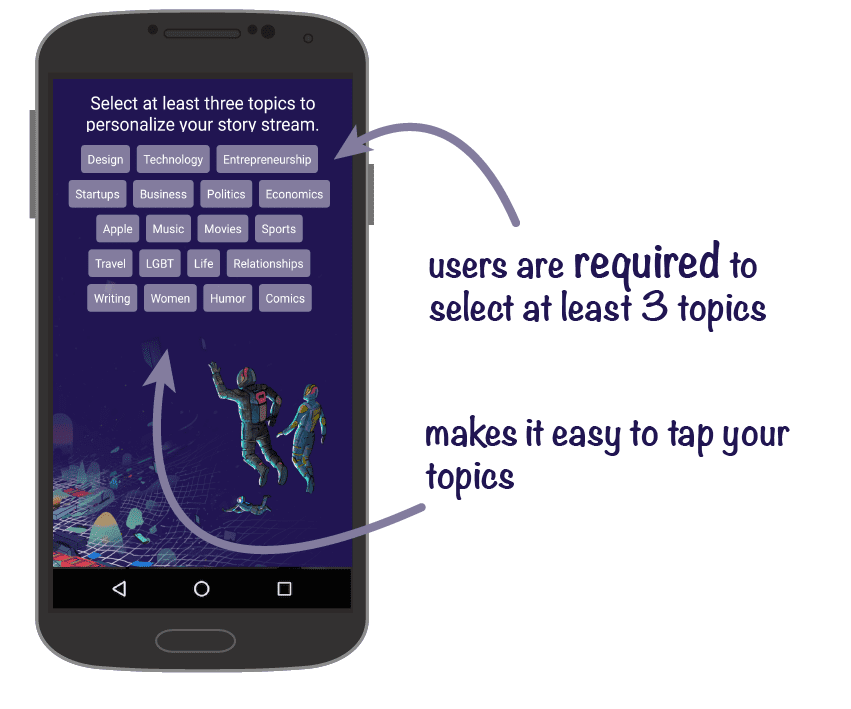
Now Medium could just show them any old mashup of articles, but lack of topic interest and relevance might quickly drive app users away. Medium asks for this interest data upfront in order to improve long-term satisfaction, engagement, and retention.
And while there is a risk of losing a small number of new users who are turned off by this requirement, it’s much smaller than the app abandonment Medium would face by serving up generic content.
2. By Making it Easier to Sign via Social Channels
You can also request user data by packaging it as a way to make the user’s life a little easier.
Social sign-in options accomplish just this by having app users exchange a certain level of social profile data for the benefit of convenience; allowing them to sign-in with a single click. For those who live by the motto “time is money”, sacrificing a bit of data in exchange for efficiency is a fair price to pay.
Headspace offers a social sign-up option alongside an email sign-up option, packaged with a blurb emphasizing the benefits users receive when they sign-up.
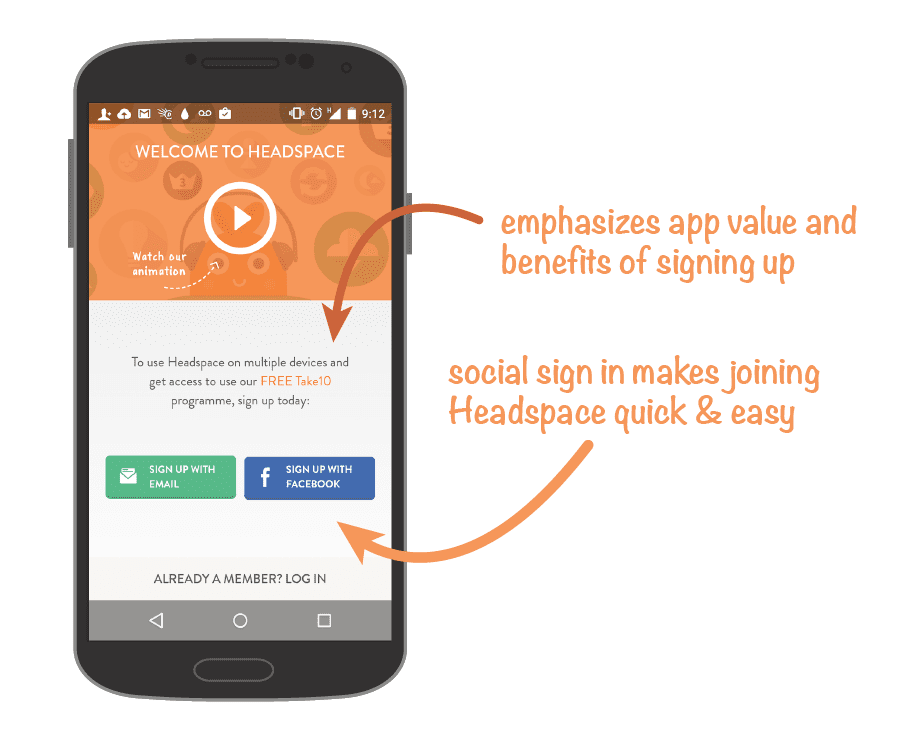
3. To Get Extra Lives for Data
Many apps have found ways to harness the power of gamification by asking for data in exchange for extra bonuses, but of course the apps that do this best are gaming apps themselves.
Gaming apps have the unique ability to completely capture a user’s undivided attention. When app users are playing a game they love, they become wholly invested.
Many gaming apps focus their whole monetization strategy on getting users hooked to their games and requiring that users pay real-life money in order to progress in the game. Where users are willing to provide money in exchange for bonus lives and new character skins, they’ll be even more willing to provide data.
Gaming apps can ask users for data in exchange for numerous benefits, such as:
- New weapons for joining a mailing list
- Extra lives for connecting to the app via social channels
- Additional character skins for filling out more profile information
- Bonus levels for inviting a friend to join the game
- More playing time for answering a short questionnaire
While gamification comes naturally to gaming apps, other apps can incorporate gamification elements as well to encourage engagement and ask for data.
For example, non-gaming apps might still offer game-like incentives such as badges (ex. Untappd awards users new badges for completing certain objectives) or avatar skins (ex. Waze gives more avatar options as users drive more miles with the app).
4. To Provide Enhanced App Features
While onboarding can be a great time to ask for essential data that will create a good user experience, you likely won’t be able to ask for all the information you’d like on that first launch. After all, users want to start using your app, not spend all day answering questions!
Once your users have gotten a chance to use your app and appreciate its value, you can begin asking for more data in exchange for richer, more advanced app features.
In the example below, Timehop explains that users will have more access to old photos and conversations with friends by hooking up to Google Photos and Gmail.
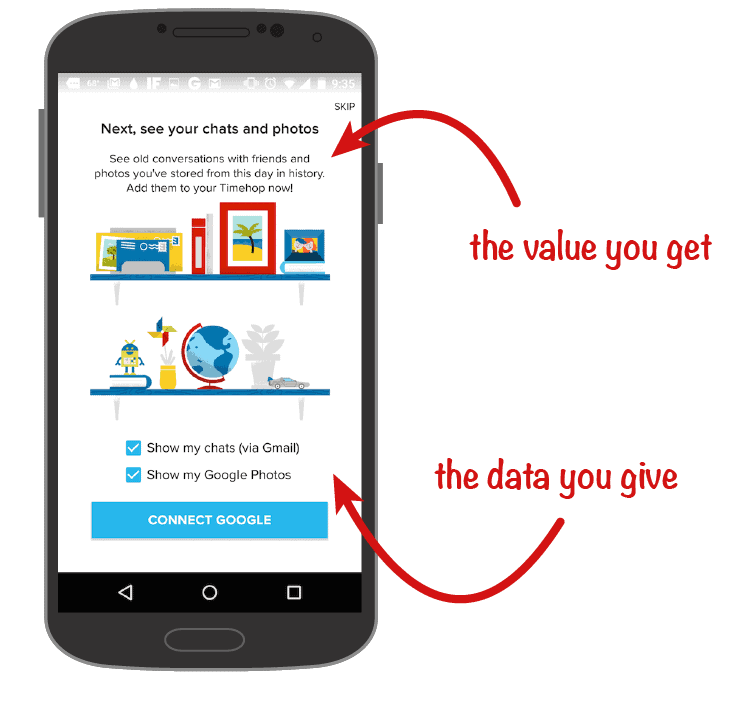 Again, as with your initial data requests during onboarding, it’s important to always highlight the value users will get by providing you with data.
Again, as with your initial data requests during onboarding, it’s important to always highlight the value users will get by providing you with data.
Here are some other examples of enhanced features apps could offer in exchange for data.
- Weather apps might ask for primary location data in order to always show a snapshot of weather at the user’s home location.
- Photo apps could ask for Google credentials in order to automatically upload new photo creations to Google Drive.
- Check-In apps might ask for access to Twitter so that users can share their check-in status across social networks with just one click.
- Concert alert apps might ask for access to a user’s Spotify account to notify them when their favorite bands are playing nearby.
- Dating apps might ask for access to a user’s Facebook account to help connect them with 3rd party friends they have in common.
5. For Added Security
In some cases, providing additional data can help you heighten the security of your app with more advanced authentication processes. When users realize you’re asking for data in order to help keep them secure, they’ll often be more than willing to provide the information you ask for.
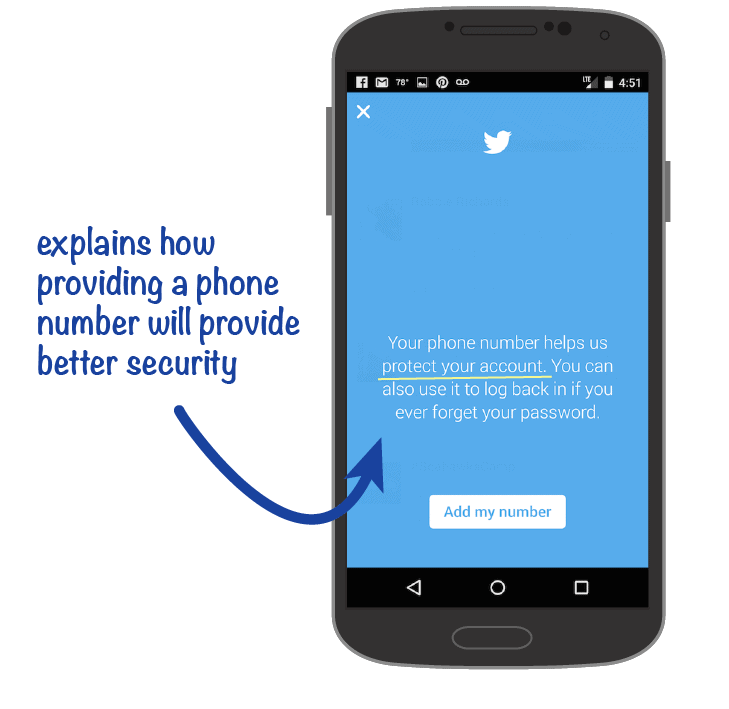
6. To Help Users Complete Goals
Users will be more willing to provide personal data when it means that the information will allow them get more out of your app. Fitness and other goal-oriented apps are often able to convince users to provide more data with the promise that this additional information will ultimately help users complete their goals.
A fitness app might ask about a user’s fitness goals and current fitness level to better assess what their new workout plan should be.
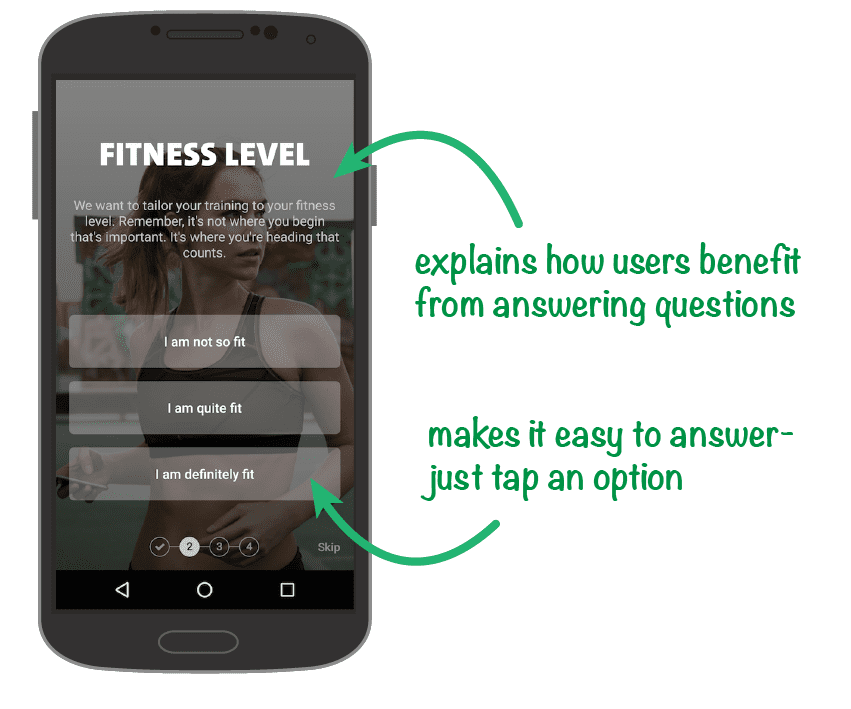
To make this most effective, it’s best to start with asking users about the goals they want to achieve, and then asking the nitty gritty details you need to get them there. For example, a weight-loss app might start with asking how much weight a user would like to lose before going on to ask the user’s current weight, regular eating habits, and exercise routine.
7. In Exchange For Promo Codes or Rewards
Retail apps may consider asking users for data in exchange for a special discount.
People love getting a good deal, and when you’re offering a promo code or discount for a product they want, users will often give a bit of bonus data to access the offer.
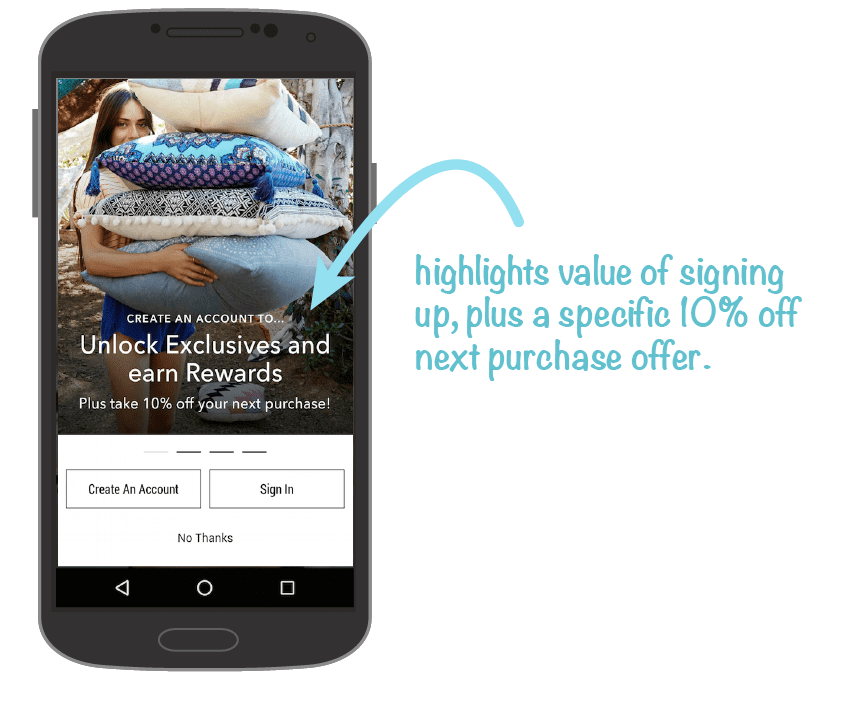
The type of data you ask for can vary from simple profile data to more in-depth surveys on shopping habits and brand preferences.
Keep in mind that the more data you ask for (and the more time that it takes for users to provide you with that information), the bigger the reward will have to be to keep users incentivized.
8. Label them as Community Builders
Another way to ask users for additional data is by structuring the request as a way to help other users and gain some sort of seniority within the app.
Asking users to contribute with the promise that their responses will create a better experience for others and boost their user status is a big motivator.
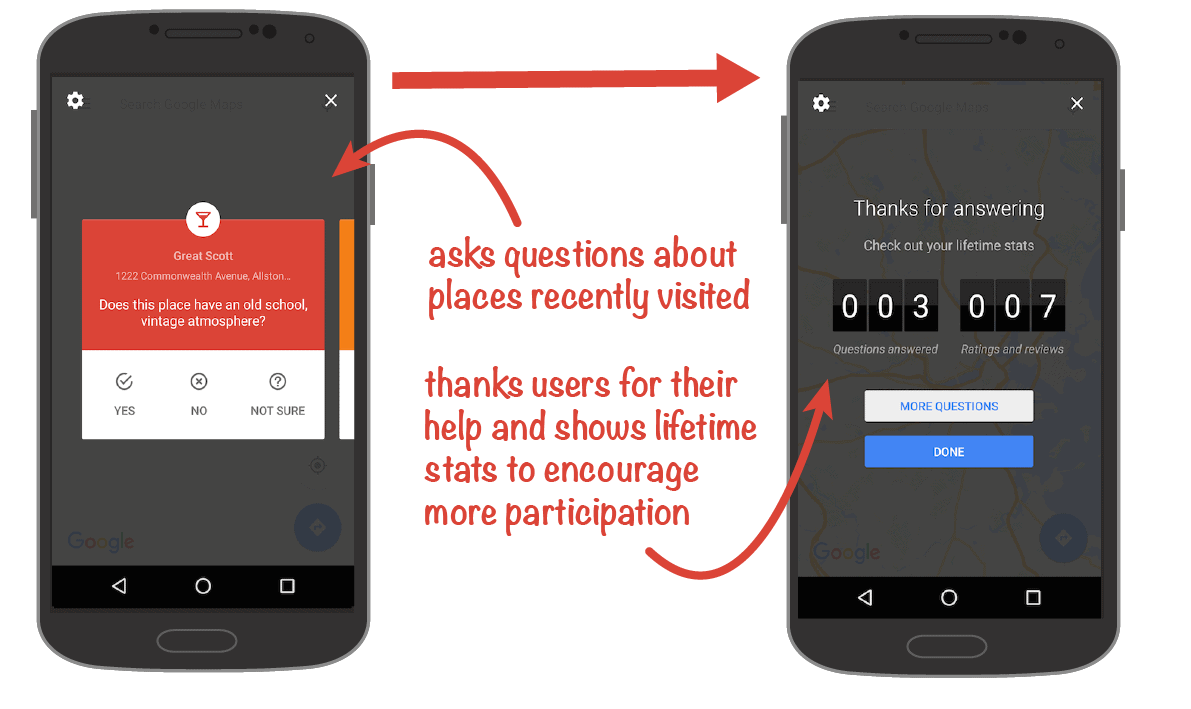
When Asking For User Data, Make It Easy
In considering these different methods for asking users for more data, it’s also important to remember that apps must make providing this data extremely easy for users.
If providing additional information is going to be a huge hassle, users will walk the other way.
Make data sharing user-friendly by:
- Using Layered Screens. Layered screens are designed so that once a user completes a few pieces of information, the old screen vanishes and a new screen is brought in. This prevents users from getting overwhelmed by seeing a long list of questions they are expected to answer.
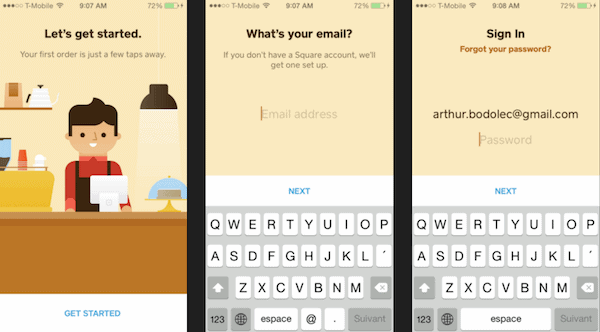 Square Order app example comes from UX Archive
Square Order app example comes from UX Archive
- Progress Screens. To complement layered screens, you’ll want to include some progress indicators as well. Having many layered screens with no indication of progress will stress a user out – they may fear that the questions will never end! Even subtle indicators like small highlighted circles or changes in screen color tone provide users with the satisfaction of knowing that they are progressing through the experience that will eventually reach a conclusion.
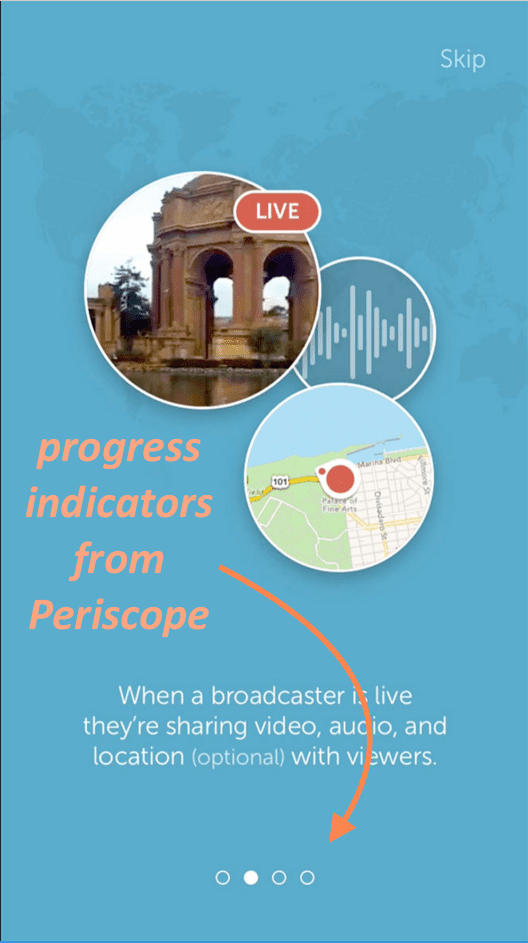
- Use Selection Options & Pre-Written Text When Possible. Avoid forcing users to type out answers on cumbersome smartphones. Instead, make use of selection indicators for pre-crafted answer options to make the experience quick and easy for users.
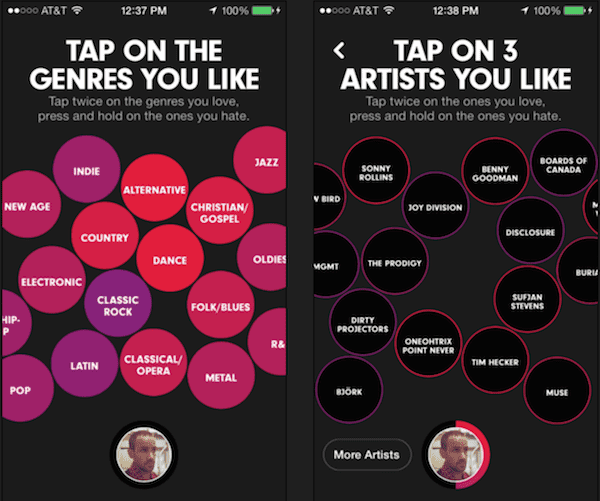 Beats Music app example comes from UX Archive
Beats Music app example comes from UX Archive

